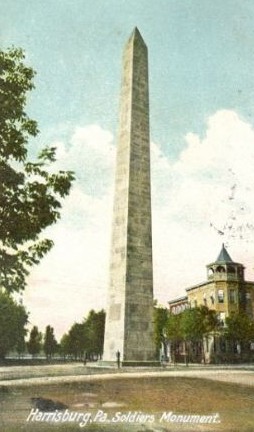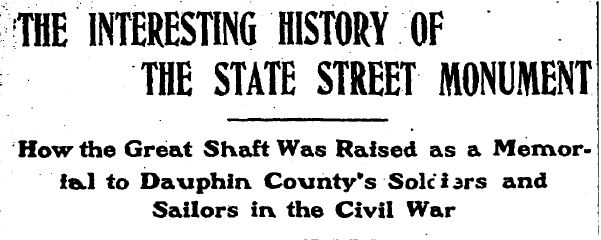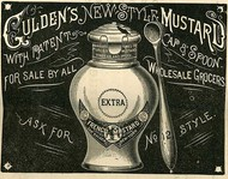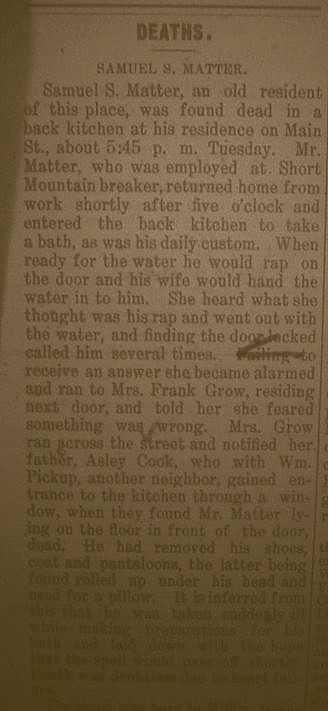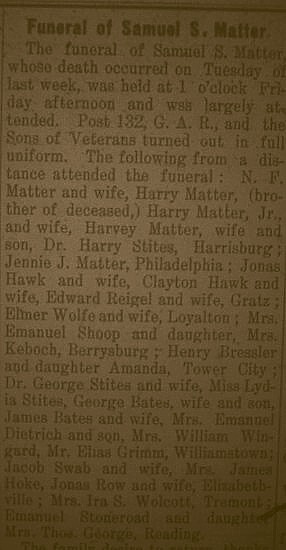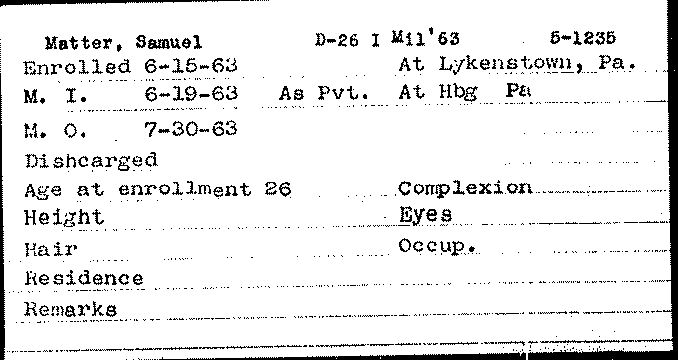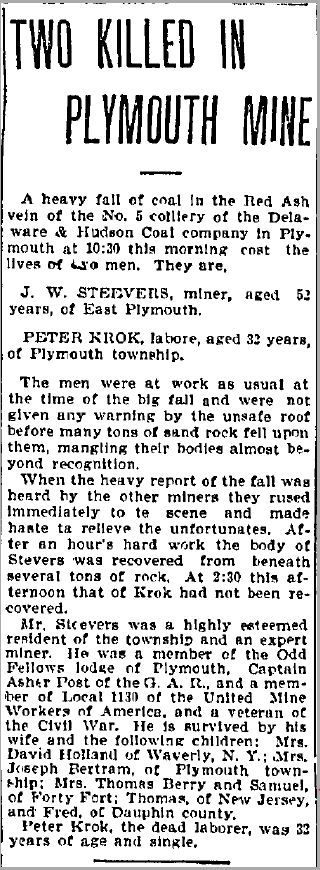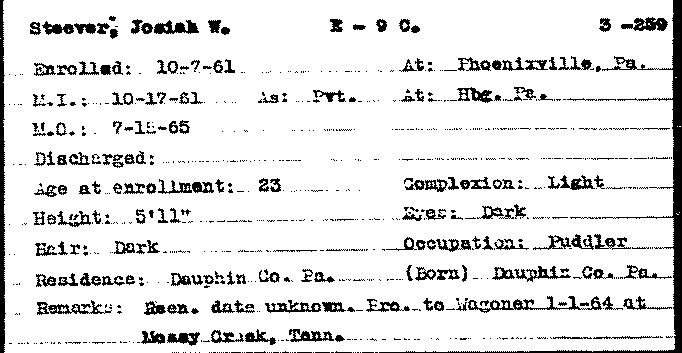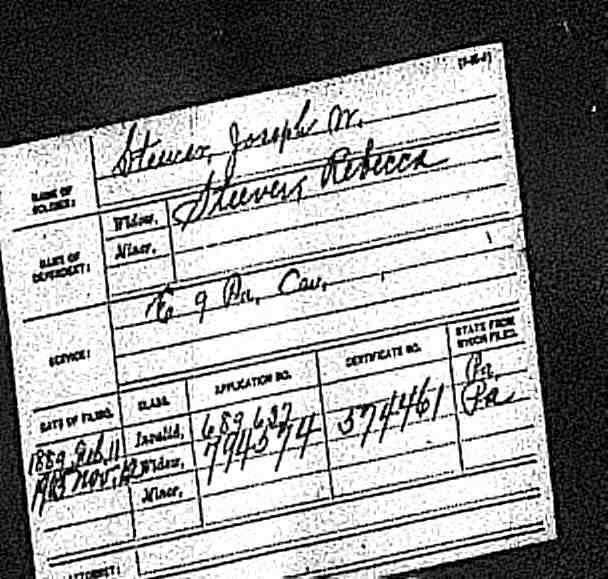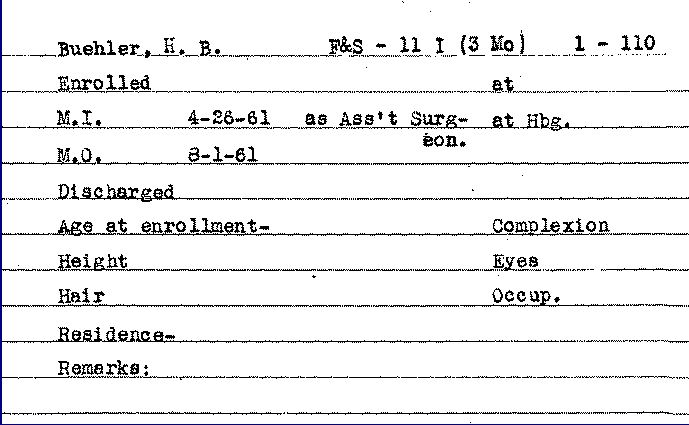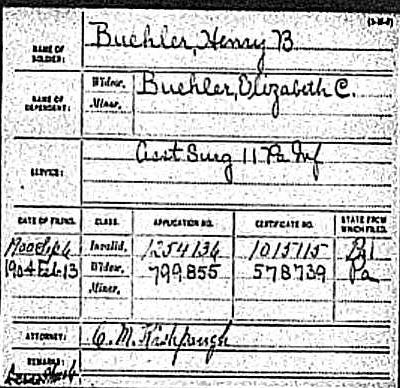History of the Dauphin County Civil War Monument – Part 1
Posted By Norman Gasbarro on March 13, 2012
The Dauphin County Memorial to the Civil War is currently located in a park at 3rd Street and Division Streets near William Penn High School and near Italian Lake. It is now in the Uptown section of Harrisburg, north of what was once the entrance area to Camp Curtin. The monument stands about 110 feet high and is a single obelisk which resembles a smaller version of the monument to George Washington in Washington, D.C. The stone of the monument is native to the area and was cut from the banks of the Susquehanna River.
The monument was originally located at the intersection of North 2nd Street and State Streets but in 1960, after years of deterioration, it was cleaned and restored and moved to the park where it presently resides.
While the monument inscription indicates that it was originally erected in 1869, the fact is that it was not completed until 1876 and before its completion, the “pile of stone” was an eyesore and embarrassment in downtown Harrisburg. The long, difficult struggle to get funding for the monument and complete it in a reasonable amount of time after the war will be discussed in a series of five posts beginning today. The story will be told as reported in the Harrisburg Patriot, 25 December 1903.
THE INTERESTING STORY OF THE STATE STREET MONUMENT
How the Great Shaft Was Raised as a Memorial to Dauphin County’s Soldiers and Sailors in the Civil War
The younger generation, to whom the great granite obelisk at the intersection of State and Second Streets has always been as much a part of Harrisburg as the street itself, has little or no knowledge of the deep reverence and often deeper sorrow for now almost forgotten heroes which animated the men and women of Dauphin County who were instrumental in its erection. Few perhaps of the boys and girls who in the past thirty years have played tag around its base, or who have climbed the four old cannon, which until the past few weeks, have marked the four corners, have even read the inscription upon it. “To the soldiers of dauphin County, who gave their lives for the life of the Union in the War for the Suppression of the Rebellion, 1861-1865. erected by their fellow citizens 1869”; nor have they the faintest conception of the time and strength and labor, the intense enthusiasm, the hopes and fears, the bitter disappointments and long delays, which mark its history.
Several circumstances recently have revived an interest in this monument. An agitation for its removal from its present site has been started. ; it has also been proposed to erect a new monument to the soldiers and sailors who fell in the Civil War; and within the last fortnight has added the wife of the War Governor of Pennsylvania who heartfelt interest in the State so greatly endeared her to the people, and who was one of the directors in raising funds for this monument to their memory.
Dauphin County took no small part in the preservation of the Union. Her sons fought in nearly every Pennsylvania regiment; and their names were found on the regimental rolls of Massachusetts, Ohio, New Jersey, Delaware, Maryland, and California; in the regular army and the navy. The Thirty-third Pennsylvania Regiment [33rd Pennsylvania Infantry] had three distinct Dauphin County companies, and there was also a large quota of colored troops [African American]. Many of her sons laid down their lives for the cause they loved, and some to-day rest in unmarked graves in far Southern States. It is not surprising then that in the days when the wounds of this bitter struggle still bled, the citizens of dauphin County wished to do honor to those who had died for their country’s honor.
On 12 January 1866, a meeting was held in the old State Capital Hotel, where the Post Office now stands, in the interest of a monument to the soldiers of Dauphin County. The project immediately took hold upon the community. Gen. E. C. Williams was made president of a Monument Association; Maj. J. S. Detweiler, secretary; George Small, treasurer; Col. H. C. Alleman, chairman, and an executive committee of fifty prominent officers was appointed. These were Gen. Joseph F. Knipe, E. C. Williams, Thomas J. Jordan; Colonels W. W. Jennings, Henry McCormick, F. Asbury Awl, Horace Porter, John E. Parson, E. G. Savage, J. Wesley Awl, E. L. Whitman, James A. Congdon; Majors W. D. Earnest, Henry Sheffer, John P. Brua, T. D. Greenawalt, Jacob Rehrer, Charles C. Davis, Frank Miller, John Gotchall, D. J. Boynton, John T. Morgan, E. C. Reichenbach, O. S. Simmons; Captains John Nevin, W. H. Harris, John K. Shott, T. S. Freeland, T. K. Scheffer, Levi A. Weaver, C. A. Nissley, G. W. Fenn, J. T. Ensminger, T. J. Novinger, P. Bergstresser, Charles D. Wise, J. Henderson, H. A. Miles, M. Novinger, J. F. Bossler; Surgeons S. S. Shultz, George Dock, Charles Bower, William H. Egle, Harry Buehler; Adjutants A. L. Chayne and George W. Boyd.
The story of the monument will continue in the post tomorrow.
 ;
;
